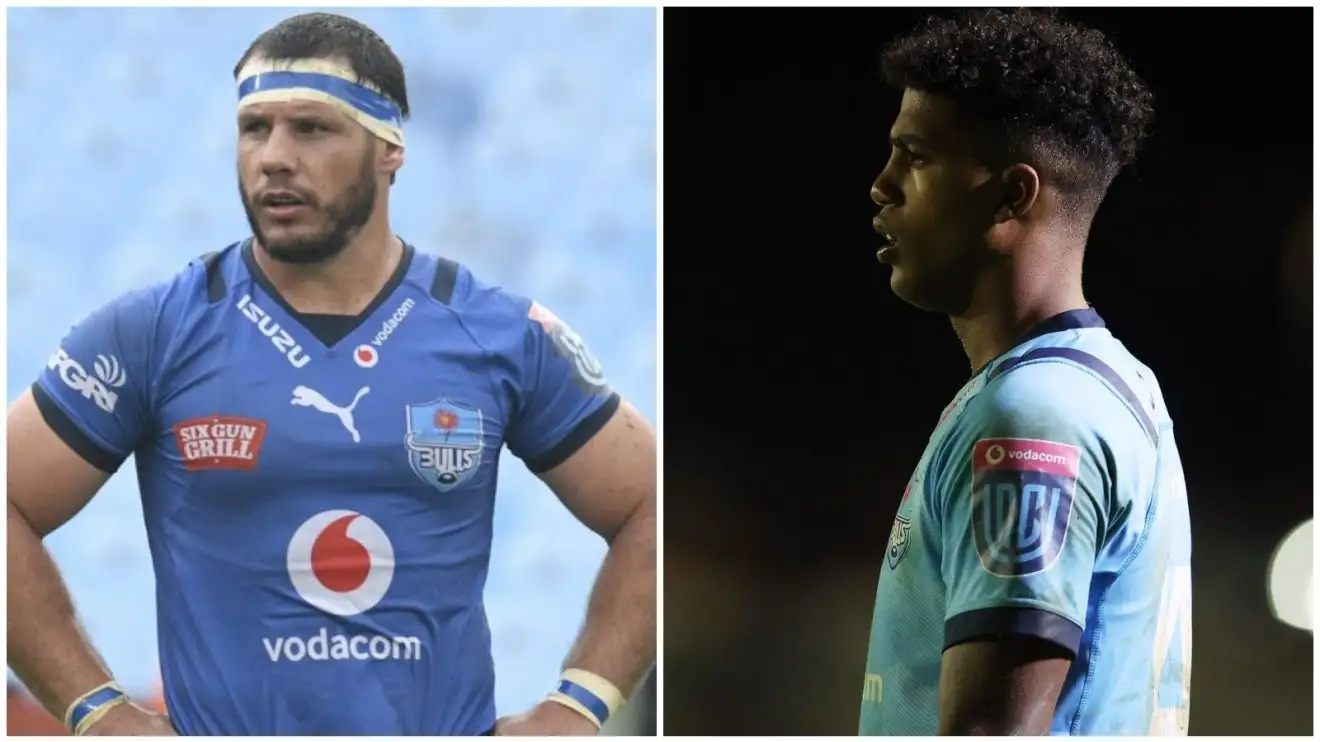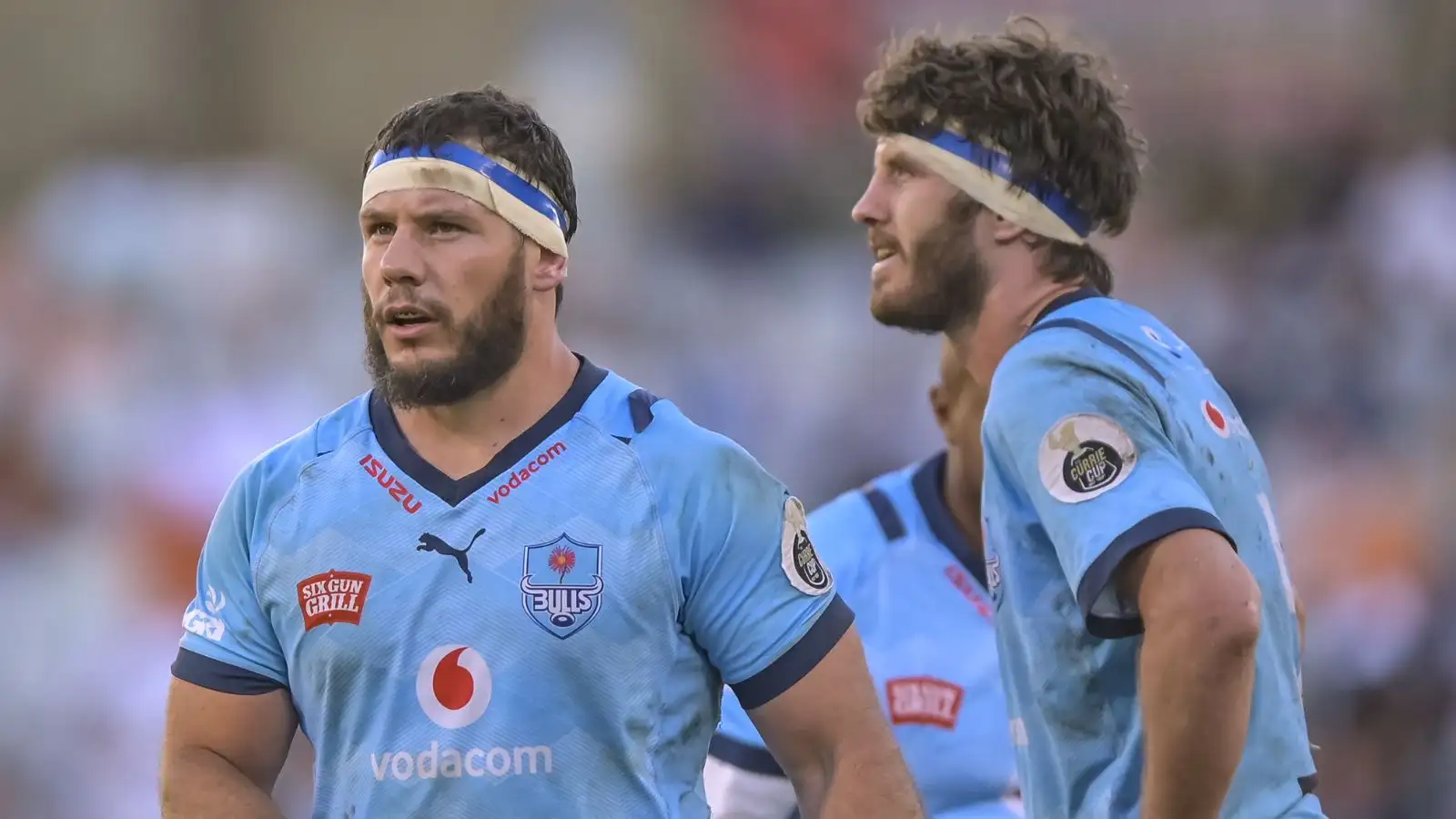Champions Cup law discussion: Bulls try ‘should not have stood’ as law needs enforcing

Should Marcell Coetzee's try against Lyon have stood?
An occurrence that happens relatively often had rather more significant than usual consequences in the Investec Champions Cup clash between the Bulls and Lyon at Loftus Versfeld on Saturday.
Canan Moodie blew through a gap, as he does, and set off on a bee-line to the whitewash. Around five metres short he was brought down by a retreating Xavier Mignot, with Thaakir Abrahams and Alfred Parisien also involved.
Abrahams retreats goal-side of Moodie to the side of the tackled player, Parisien is goal-side of Moodie directly behind the tackled player while Mignot heaves himself over Moodie towards the goal-line in order not to be in the way of the ball as the ruck is formed.
Cleaning out
Johan Goosen and David Kriel are then in quick attendance as cleaners at the ruck, and both go through, taking away Parisien while Mignot is busy getting himself on the right side.
Moodie, upon being tackled, had initially looked up and to his right side for a possible offload (Goosen had likely registered his presence). But with Parisien retreating along that line too, Moodie decides the offload off the ground is too risky and instead rolls the ball under his body to his left, holding it all the time, then presents it back just as Mignot is climbing over him.
Investec Champions Cup: Quarter-final ties, times and dates revealed
But then, once Goosen and Kriel have cleaned away Parisien and Mignot is back on his own side, Moodie, still on the ground, throws the ball back a good five metres to scrum-half Embrose Papier. Papier then releases Marcell Coetzee for the Bulls‘ third try.
The question here is: was Moodie within his rights to throw that pass off the ground?
A look at the relevant law:
Law 14.7 regarding the tackled player says that:
Tackled players must immediately:
Make the ball available so that play can continue by releasing, passing or pushing the ball in any direction except forward. They may place the ball in any direction.
Move away from the ball or get up.
Ensure that they do not lie on, over or near the ball to prevent opposition players from gaining possession of it.
On the face of it then, perhaps Moodie is within his rights. He is the tackled player and he makes the ball available by passing it.
Perfect response after Leinster 💪
The @Vodacom @BlueBullsRugby are through to the Quarter-Finals of the Investec @ChampionsCup.
They'll face either Munster or Northampton! 🔥 pic.twitter.com/RCeoIANPrv
— vodacomrugby (@VodacomRugga) April 7, 2024
But this is not the first thing he does. Nor is it, in fact, the second. The first thing he does is look for a similar pass on the right-hand side, but decides it is not on. The second thing he does is to roll back to his left in order to make the ball available – he even presents the ball back before Kriel and Goosen clean over him.
The third thing he does is to look up after the clean and flick the ball up. But this is the third thing he does. Is that immediately making it available? No. Immediate would mean the first action of the player, or in a few choice circumstances the second, but not the third.
Moreover, as Kriel and Goosen are both cleaning over him, he could also be penalised for playing the ball in a ruck. And with Goosen and Kriel both having cleaned past him, his pass also prevents Lyon players coming from an onside position and potentially stealing the ball that has emerged from the back of a ruck because he is holding on to it.
Similar moment in Bordeaux
Yoram Moefana, during the Bordeaux-Begles v Saracens Champions Cup game, made perhaps an even more egregious transgression of this law. He had the ball on the ground and he presented it back, but Saracens successfully counter-rucked over and beyond him. He then flicked the ball up off the ground once he was clear of all the ruckers on the Saracens side!
Returning to Moodie’s pass, this would appear to be one of those times when the directives of speeding the game up and allowing leeway for positive play is trumping a precise implementation of law. It is seen more and more often. And certainly in the Bulls v Lyon game, both teams were offloading in as many contact situations as possible. It made for a fun spectacle. But allowing players to pass off the ground after a ruck has been formed and allowing them to perform three rugby actions after a tackle is giving a little too much leeway. The try should not have stood and this law needs enforcing.

